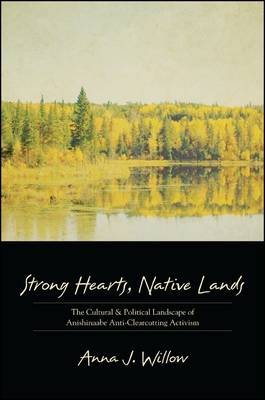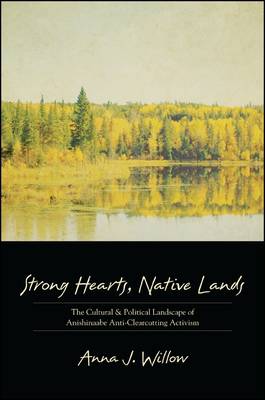
- Afhalen na 1 uur in een winkel met voorraad
- Gratis thuislevering in België vanaf € 30
- Ruim aanbod met 7 miljoen producten
- Afhalen na 1 uur in een winkel met voorraad
- Gratis thuislevering in België vanaf € 30
- Ruim aanbod met 7 miljoen producten
Zoeken
Strong Hearts, Native Lands
The Cultural and Political Landscape of Anishinaabe Anti-Clearcutting Activism
Anna J Willow
€ 53,45
+ 106 punten
Omschrijving
In December 2002 members of the Grassy Narrows First Nation blocked a logging road to impede the movement of timber industry trucks and equipment within their 2,500-square-mile traditional territory. The Grassy Narrows blockade went on to become the longest-standing protest of its type in Canadian history. The story of the blockade is a story of convergences. It takes place where cultural, political, and environmental dimensions of indigenous activism intersect; where history combines with current challenges and future aspirations to inspire direct action. When members of this semiremote northwestern Ontario Anishinaabe (Ojibwe) community took action to protect their land, they did so with the recognition that the fate of the earth and the fate of much more are tightly interwoven. Anna J. Willow demonstrates that indigenous people's decisions to take environmentally protective action cannot be understood apart from motives that Western observers have most often considered political or cultural rather than purely environmental. By recounting how and why one Anishinaabe community was able to take a stand against the industrial logging that threatened their land-based subsistence and way of life, Willow offers a more complex--and more constructive--understanding of human-environment relationships.
Specificaties
Betrokkenen
- Auteur(s):
- Uitgeverij:
Inhoud
- Aantal bladzijden:
- 266
- Taal:
- Engels
- Reeks:
Eigenschappen
- Productcode (EAN):
- 9781438442020
- Verschijningsdatum:
- 2/07/2012
- Uitvoering:
- Paperback
- Formaat:
- Trade paperback (VS)
- Afmetingen:
- 150 mm x 226 mm
- Gewicht:
- 362 g

Alleen bij Standaard Boekhandel
+ 106 punten op je klantenkaart van Standaard Boekhandel
Beoordelingen
We publiceren alleen reviews die voldoen aan de voorwaarden voor reviews. Bekijk onze voorwaarden voor reviews.











